E X P L O R E
D I S C O V E R
P R O T E C T
2021 IMPACT REPORT

E X P L O R E
D I S C O V E R
P R O T E C T
2021 IMPACT REPORT

OUR MISSION
at Marine Applied Research and Exploration (MARE) is to explore and document the ocean in order to support its conservation and management. We increase scientific understanding of deepwater marine ecosystems through high-definition video collected in targeted, often never-before-seen areas with our deepsea robotic vehicles.
We accomplish our mission by providing actionable information supported by data and video highlights to inform ocean management, while partnering with scientific organizations and agencies and educating the public.
Letter from the
CHAIR, BOARD OF DIRECTORS
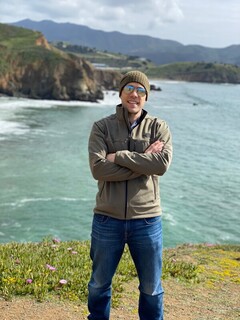 2021 was a choppy year marked by poignant environmental and social challenges. While we are all too aware of what’s happening above ground, below the waves we slowly continue to learn about the impact of human activity. The Intergovernmental Panel on Climate Change projected this year that the ocean will transition to unprecedented conditions by the end of the 21st century due to accelerating carbon and heat uptake, with the ocean expected to absorb 5-7 times as much heat as was taken up over the last 50 years. The implications for marine ecosystems and the communities that depend on them are severe.
2021 was a choppy year marked by poignant environmental and social challenges. While we are all too aware of what’s happening above ground, below the waves we slowly continue to learn about the impact of human activity. The Intergovernmental Panel on Climate Change projected this year that the ocean will transition to unprecedented conditions by the end of the 21st century due to accelerating carbon and heat uptake, with the ocean expected to absorb 5-7 times as much heat as was taken up over the last 50 years. The implications for marine ecosystems and the communities that depend on them are severe.
Despite all this, I want to write today about hope and impact. Over the years, MARE has shone a light in new locations, and is proud to have illuminated the benefits of protecting our ocean. At this year’s UN General Assembly, the leaders of more than 100 countries agreed with this sentiment when they stood up and publicly committed to the “30×30” goal to protect at least 30% of the global ocean by 2030. Our home state of California quickly followed suit with its own matching target. At MARE we are committed to supporting data-driven decisions that further our pursuit of intelligent ocean management, and we intend to work tirelessly to deepen our impact here at home, expand our reach to new shores, and deploy new technologies in support of 30×30 and other impactful global initiatives.
Against all odds, 2021 was a year of unprecedented expansion for MARE, and we have no plans to slow down. The time is now to do more for our oceans. On behalf of the Board of Directors, we invite you to support MARE and join us as we pursue our vision for a thriving ocean.
Jon Glassman
Chair, Board of Directors
Letter from the
EXECUTIVE DIRECTOR
W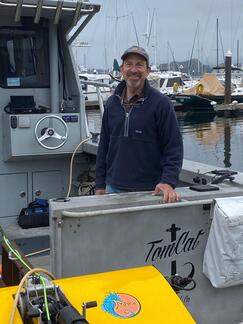 e have a unique opportunity at this point in time to shift the alarming trajectory we have been on, before our blue planet is beyond repair. We made bold investments in ocean science and technology. One year into the U.N. Decade of the ocean, MARE expanded its footprint to assist new geographies with their ocean understanding and protection. MARE is proud to play a role in addressing our ocean’s most urgent issues by bringing critical information to key decision makers and influencers. Greater knowledge of our oceans’ ecosystems enables us to create science- based solutions guiding how we both use and protect our ocean.
e have a unique opportunity at this point in time to shift the alarming trajectory we have been on, before our blue planet is beyond repair. We made bold investments in ocean science and technology. One year into the U.N. Decade of the ocean, MARE expanded its footprint to assist new geographies with their ocean understanding and protection. MARE is proud to play a role in addressing our ocean’s most urgent issues by bringing critical information to key decision makers and influencers. Greater knowledge of our oceans’ ecosystems enables us to create science- based solutions guiding how we both use and protect our ocean.
In spite of the challenges COVID-19 continued to present, MARE dove into 2021 with ambition, with goals to grow and continue to innovate. With EXPANSION at the top of our list, we put MARE’s fleet and resources to work in Costa Rica, Hawaii, and the British Virgin Islands, as well as California. With our strategic partners, we searched for tiger sharks with the Discovery Channel, documented corals in a Caribbean area afflicted with a deadly coral disease, and conducted San Francisco Bay water quality surveys with the San Francisco Estuary Institute. In the midst of these new projects, MARE completed our long term monitoring surveys of California’s Marine Protected Areas in preparation for a critically important 2022 decadal year review. In addition, we increased our internal capacity to do even more. We have added new staff, expanded our Eureka office, and brought on a new Education Program Manager.
As I reflect on the past year, I am proud of the commitment MARE brings to marine exploration, discovery, and protection. I am also deeply grateful for the community of supporters and partners that have enabled us to grow in scope and size, and to expand our impact around the world. With your help we will chart a new course for our ocean’s health.
Dirk Rosen
Executive Director
California’s Network
OF MARINE PROTECTED AREAS

Starting in 2012, California took the progressive step of protecting 16% of its waters via the Marine Life Protection Act, and expanded to a network of 124 Marine Protected Areas (MPAs) along the coast: the second largest network of marine reserves in the world, stretching over 1,100 miles of coastline. This system serves to promote resilience and sustain biodiversity of marine ecosystems. With a growing interest in restoring our ocean’s health globally, MPAs are a promising tool for conservation.
Since 2003, MARE has been a key player in the State’s effort to document its network of marine protected areas. In 2021, we partnered with the California Department of Fish and Wildlife to continue the ‘Long Term Monitoring’ Program from Crescent City to San Diego for our 3rd consecutive year. Our work provides an archival record of the world’s nascent, ever-evolving knowledge base covering deep sea habitat, species abundance and ecosystem changes. Based on guidance from the scientific community, we know now that 30% protection is needed to restore a healthy ocean. The Long Term Monitoring Program will support this bold goal.
In partnership with Moss Landing Marine Laboratory, the University of California, Santa Barbara, California State University, Monterey Bay and Humboldt State University, deepwater data, including ROV data, is being analyzed to inform the decadal review of the State’s MPAs. Additionally, MARE is working with Dr. Nick Perkins, a research fellow from the University of Tasmania, to apply cutting edge modeling techniques and perform a comprehensive analysis of 15 years of ROV data, the largest visual dataset for deepwater habitat on the west coast.
Crossing the Pacific
HAWAII’S 30X30 GOALS

We brought our new vehicle, BATFish, to Hawaii in Spring 2021 to survey targeted marine regions around Maui and Molokai. We are working with Hawaii’s Division of Aquatic Resources to integrate this information into a long-term adaptive management plan. This research will be used to design protection policies for the state’s deep-sea coral habitats, as part of a larger goal of protecting 30% of Hawaii’s marine ecosystems by 2030.
The BATfish is a swift, hydrodynamic glider that is towed behind a small boat, providing live-feed video and still photos that can later be analyzed to uncover insights into species abundance and habitat structure. Lightweight and portable, with the ability to record the marine environment in situ, BATFish technology not only makes data capture more affordable, but also enables researchers to better identify and react to the needs of at-risk species and ecosystems.
California’s Network
OF MARINE PROTECTED AREAS

Starting in 2012, California took the progressive step of protecting 16% of its waters via the Marine Life Protection Act, and expanded to a network of 124 Marine Protected Areas (MPAs) along the coast: the second largest network of marine reserves in the world, stretching over 1,100 miles of coastline. This system serves to promote resilience and sustain biodiversity of marine ecosystems. With a growing interest in restoring our ocean’s health globally, MPAs are a promising tool for conservation.
Since 2003, MARE has been a key player in the State’s effort to document its network of marine protected areas. In 2021, we partnered with the California Department of Fish and Wildlife to continue the ‘Long Term Monitoring’ Program from Crescent City to San Diego for our 3rd consecutive year. Our work provides an archival record of the world’s nascent, ever-evolving knowledge base covering deep sea habitat, species abundance and ecosystem changes. Based on guidance from the scientific community, we know now that 30% protection is needed to restore a healthy ocean. The Long Term Monitoring Program will support this bold goal.
In partnership with Moss Landing Marine Laboratory, the University of California, Santa Barbara, California State University, Monterey Bay and Humboldt State University, deepwater data, including ROV data, is being analyzed to inform the decadal review of the State’s MPAs. Additionally, MARE is working with Dr. Nick Perkins, a research fellow from the University of Tasmania, to apply cutting edge modeling techniques and perform a comprehensive analysis of 15 years of ROV data, the largest visual dataset for deepwater habitat on the west coast.
Crossing the Pacific
HAWAII’S 30X30 GOALS

We brought our new vehicle, BATFish, to Hawaii in Spring 2021 to survey targeted marine regions around Maui and Molokai. We are working with Hawaii’s Division of Aquatic Resources to integrate this information into a long-term adaptive management plan. This research will be used to design protection policies for the state’s deep-sea coral habitats, as part of a larger goal of protecting 30% of Hawaii’s marine ecosystems by 2030.
The BATfish is a swift, hydrodynamic glider that is towed behind a small boat, providing live-feed video and still photos that can later be analyzed to uncover insights into species abundance and habitat structure. Lightweight and portable, with the ability to record the marine environment in situ, BATFish technology not only makes data capture more affordable, but also enables researchers to better identify and react to the needs of at-risk species and ecosystems.
MARE TECHNOLOGY: Our Window to the Deep
Marine technology illuminates previously unreachable depths, enabling critical research and helping us understand our unexplored and elusive deep sea. Through our efforts to document, analyze and understand the wonders of the deep sea, we are collectively learning how to effectively manage and preserve Earth’s final frontier. Through the advancement of blue technology, MARE has upheld its mission to explore, discover and protect the deep sea.

ROV BEAGLE: 1,000 meters deep
Our flagship vehicle delivers live HD video and stills for detailed ocean imaging. The Beagle is equipped with nine cameras, a suite of deep sea sensors, and a manipulator arm for sample collection. The ROV Beagle sets the standard for California’s MPA ROV surveys.
CALIFORNIA MARINE PROTECTED AREAS – In 2020 and 2021 MARE used the ROV Beagle to document MPAs from San Diego to Crescent City and surveyed over 350 km to inform California’s decadal review of MPAs.
ROV MANTIS: 200 meters deep
Excelling at a wide range of inspection and exploration tasks, this mini ROV is nimble with a compact arm for small sampling and recovery missions. The Mantis provides a cost-effective alternative to the use of larger platforms. This vehicle can be utilized by smaller ships, flown as checked baggage on commercial flights, and still provides high quality visual assessments.
COSTA RICA SHARK SURVEY- MARE and ROV Mantis followed the elusive Tiger Shark in the Cocos Islands, 300 miles from the shore of Costa Rica. A team of expert scientists studied and filmed tiger, silver tip reef, hammerhead and Galapagos sharks as part of Discovery Channel’s Shark Week series.
BATFish: 30-100 meters deep
Weighing just 120 lbs., this hydrodynamic towsled is an economical broad-area visual survey tool.The maneuverable towed glider collects high- definition video and is easy to operate from a small boat with minimal crew.
HAWAII 30X30- BATFish’s inaugural expedition surveyed 90 km along the Maui coast and more than 10 km of Molokai’s coast to inform Hawaii’s 30×30 Initiative.
CORAL DISEASE IN THE BRITISH VIRGIN ISLANDS- Augmenting diver surveys, BATFish was able to cover almost 50 km three times faster than diver teams to document Stony Coral Tissue Loss Disease in the British Virgin Islands.
Coral Tissue Loss Disease
IN THE BRITISH VIRGIN ISLANDS
OUR TECHNOLOGY BEING USED TO FIND AND HELP PROTECT AT-RIST SPECIES: Stony Coral Tissue Loss Disease (SCTLD) is weakening large Caribbean reef systems by rapidly killing coral colonies. MARE took BATFish to the frontlines of the coral disease epidemic in the British Virgin Islands, where the team worked in partnership with local agencies, nonprofits and diver strike teams working to track and treat the disease. This time-critical data will inform resource allocation and intervention efforts to mitigate loss of these critical reef habitats.

MARE’s
EDUCATION PROGRAM
MARE’s
EDUCATION PROGRAM
STEM LEARNING
MARE’s Deep Sea Education Program aspires to be a community-based solution to improve student access to STEM training, while inspiring an appreciation for ocean technology and conservation. The program provides applied learning challenges, mentorship and customizable ocean curricula to middle school and high school classrooms with limited STEM learning opportunities.
VIRTUAL PRESENTATIONS
The Education Team launched a virtual presentation series, “Blue Tech for Ocean Conservation”, offering critical thinking and conservation activities for middle and high school students on topics pertaining to ocean ecology, ocean conservation and marine technology. The program is offered virtually to address a continued need of our local schools and teachers for virtual content.
WORLD OCEANS DAY
Inspired by MARE’s extensive library of deep sea footage, our Education Team partnered with the International Ocean Film Festival to teach a workshop on crafting short films about ocean conservation and exploration.

“One student stayed behind to tell me that she was so inspired (by MARE’s presentation) that she’s considering going to college for the first time!”
– Allison Sherman, High School Teacher
STEM LEARNING
MARE’s Deep Sea Education Program aspires to be a community-based solution to improve student access to STEM training, while inspiring an appreciation for ocean technology and conservation. The program provides applied learning challenges, mentorship and customizable ocean curricula to middle school and high school classrooms with limited STEM learning opportunities.
VIRTUAL PRESENTATIONS
The Education Team launched a virtual presentation series, “Blue Tech for Ocean Conservation”, offering critical thinking and conservation activities for middle and high school students on topics pertaining to ocean ecology, ocean conservation and marine technology. The program is offered virtually to address a continued need of our local schools and teachers for virtual content.
WORLD OCEANS DAY
Inspired by MARE’s extensive library of deep sea footage, our Education Team partnered with the International Ocean Film Festival to teach a workshop on crafting short films about ocean conservation and exploration.

“One student stayed behind to tell me that she was so inspired (by MARE’s presentation) that she’s considering going to college for the first time!”
– Allison Sherman, High School Teacher
GREATER FARALLONES AND CORNELL BANK
MARE partnered with the National Oceanic and Atmospheric Administration’s (NOAA’s) Greater Farallones and Cordell Bank National Marine Sanctuaries, United States Geologic Society (USGS) and the California Academy of Sciences to locate deep sea corals and sponges and map seafloor habitats.
Our ROV Beagle surveyed never-before-seen areas off the coast during this research expedition. The north coast is notoriously difficult to monitor, with consistently rough weather conditions and strong currents, but MARE’s experienced offshore team was able to successfully document the habitat and biodiversity of the often under-surveyed depth ranges found in these marine sanctuaries.
Our New Research Vessel
THE TOMCAT



Our new research vessel TomCat, a 38-foot aluminum catamaran, has been busy this year on San Francisco Bay. MARE is working with the San Francisco Estuary Institute and Applied Marine Sciences to better understand the impacts of elevated selenium in the Bay. Selenium is an essential trace nutrient for animals, but at high concentrations causes reproductive harm and other adverse health effects in fish, birds and amphibians.
With a top speed of 20 knots and a draft of only 2.5 feet, the TomCat is an ideal vessel for shallow water sampling as well as open ocean work. This catamaran is an efficient, stable, highly maneuverable platform with a wide, open deck and swim platform from which a variety of sampling equipment can be deployed.
MARE is Expanding our Team
MEET OUR NEW STAFF
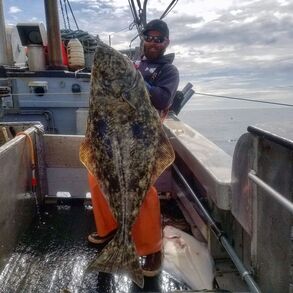 SAM PARKER, Biologist
SAM PARKER, Biologist
Sam leads MARE’s video post-cruise analyses. He has an extensive background in conducting scientific research, having spent 11 years as a Pacific Halibut Commission Biologist in Alaska. He is a licensed drone pilot and has worked for MARE since 2016 serving in a variety of roles: ROV/drone pilot, navigator and video analyst. Sam has a B.S. in fisheries biology from Humboldt State University. Sam spends most of his free time fishing from his kayak, freediving, and crafting artisanal bacon.
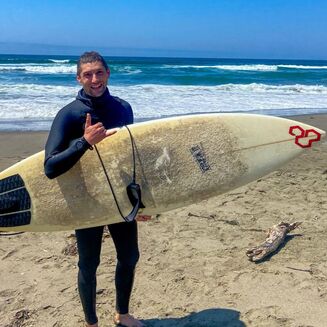 KYLE PALMER, Chief Engineer
KYLE PALMER, Chief Engineer
Kyle is MARE’s Chief Engineer, supporting offshore expeditions and maintaining our fleet of vehicles. He is a licensed electrical engineer and also a published scientist with a background in environmental systems. Kyle is talented in many aspects of engineering, fabrication, design and the sciences. He has worked in many facets of electrical design, from small-scale embedded circuit board designs that require nanowatt power consumption to megawatt-scale solar plus storage microgrid designs. When Kyle is not designing or troubleshooting electrical systems, he is biking, running, surfing, freediving, kayaking, or trying to enjoy a wild place in an adventurous way.
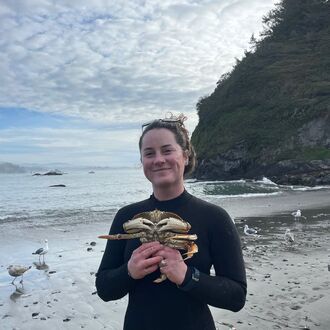 GRETA GOSHORN, Biologist and Outreach Coordinator
GRETA GOSHORN, Biologist and Outreach Coordinator
Greta works on a variety of tasks at MARE including data analysis/management and outreach. She has extensive research experience, including working with Reef Check California as an AAUS scientific diver, performing sea star wasting disease assessments and researching predation stimuli effects on invasive snails. Greta is a NAUI SCUBA instructor at the Catalina Island Marine Institute and volunteers with the Humboldt State University dive program. She holds a B.S. in Biology with a marine emphasis from Humboldt State University. In her free time, she can be found diving, hiking, surfing, paddleboarding, baking, or playing the steel pan.
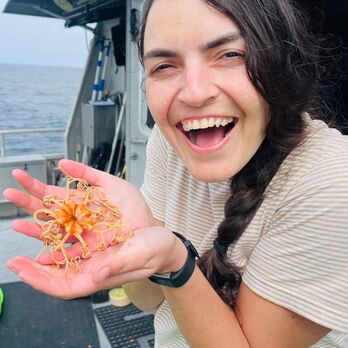 NISSA KREIDLER, GIS and Data Management Specialist
NISSA KREIDLER, GIS and Data Management Specialist
Nissa manages MARE’s geospatial map- ping and associated data analysis, and also performs ROV navigation offshore. Nissa has over ten years of experience in coastal and marine conservation, with a background in spatial ecology, science communication, and habitat restoration. She has worked with many organizations including Save The Bay, Channel Islands National Marine Sanctuary, Hawaiian Islands National Marine Sanctuary, and Humboldt State Fish and Wildlife Cooperative Research Unit. She holds a B.S. in Ecology and Evolutionary Biology from the University of California, Santa Cruz and an M.S. in Fisheries Biology from Humboldt State University. In her free time she roams the Pacific Northwest with her dog Todd.
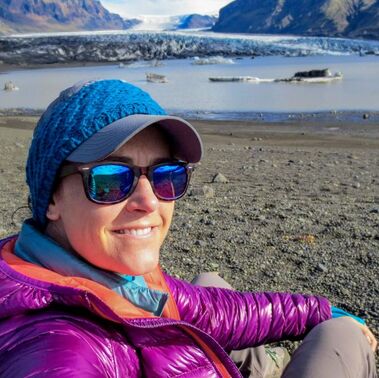 ABBY NICKELS, Education Program Manager
ABBY NICKELS, Education Program Manager
Abby manages MARE’s Deep Sea Education Program. She has spent the last decade of her career building and advancing non-profit environmental education programs. Most recently, she held the position of Associate Director of Education at the Aquarium of the Bay. Previously, she was the LiMPETS Program Manager for the Greater Farallones Association. In that role, she trained and supported LiMPETS teachers and students in their coastal monitoring efforts. Abby earned her B.S. in Marine Biology from U.C. Santa Cruz, and her M.S. in Marine Resource Management from Oregon State University. In her free time, when she is not exploring local tide pools along the coast, she continues her love of exploration and discovery through travel, backpacking, and stand-up paddleboarding.
Our Ocean Champions
Thank you to our Donors!
$100,000+
The Dean and Ann Witter Fund for Charitable Giving
$50,000+
Anonymous
Danish Explorers Fund
Paul M. Angell Family Foundation
Robert & Lisa Margolis Family Foundation
$10,000 – $24,999
April & Glenn Bucksbaum
Emmett Family Foundation
Jon Graham & Elizabeth Ulmer
HRH Foundation
Larry L. Hillblom Foundation
Thomas Louderback
$2,500 – $9,999
Allan & Laura McCarthy
Point Richmond Gateway Foundation
$1,000 – $2,499
Jeannie Blaustein & Peter Bokor
Doug Canepa
Christopher Cherney
Kerry Davidson & Dan Fitzgerald
Ferguson Family Charitable Fund
Thomas Frost
Sandra Gross & Eric Whitaker
Hobson Family Foundation
Jeff & Mia Ludlow
Laura Marlin
Bruce Meibos
Lindsey & Ken Meyersieck
Brian & Heidi Miller
Chris Oakes
Gloria Oakes
Dirk Rosen & Pamela Rich
Lawrence & Ruth Rosen
Martin & Joan Rosen
Marius Schilder
James Tustin
$500 – $999
Kellie Aamodt
Anonymous
Amadeo Bachar
Benjamin Baer
Lee Deane
Liz Frome & Jim Barnes
Mark Gordon
Barbara & Michael Johnson
Noel Massie
Michael Joseph Shearn II Charitable Giving Fund
Robert & Nancy Praetzel
Edward & Jeanette Ueber
FINANCIALS

OUR STAFF
Natasha Benjamin
Rick Botman
Johnathan Centoni
Christina Chapman
Greta Goshorn
Steve Holtz
David Jeffrey
Nissa Kreidler
Andrew Lauermann
Heidi Lovig
Abby Nickels
Aris Ownsbey
Kyle Palmer
Sam Parker
Dirk Rosen
Isaac Travers
BOARD OF DIRECTORS
Kellie Aamodt
Alicia Bihler
Dr. Kerry Davidson
Jon Glassman
Mark Gordon
Thomas Frost
Mansi Konar
Laura Moss
Chris Oakes
Larissa Pommeraud
Dirk Rosen

